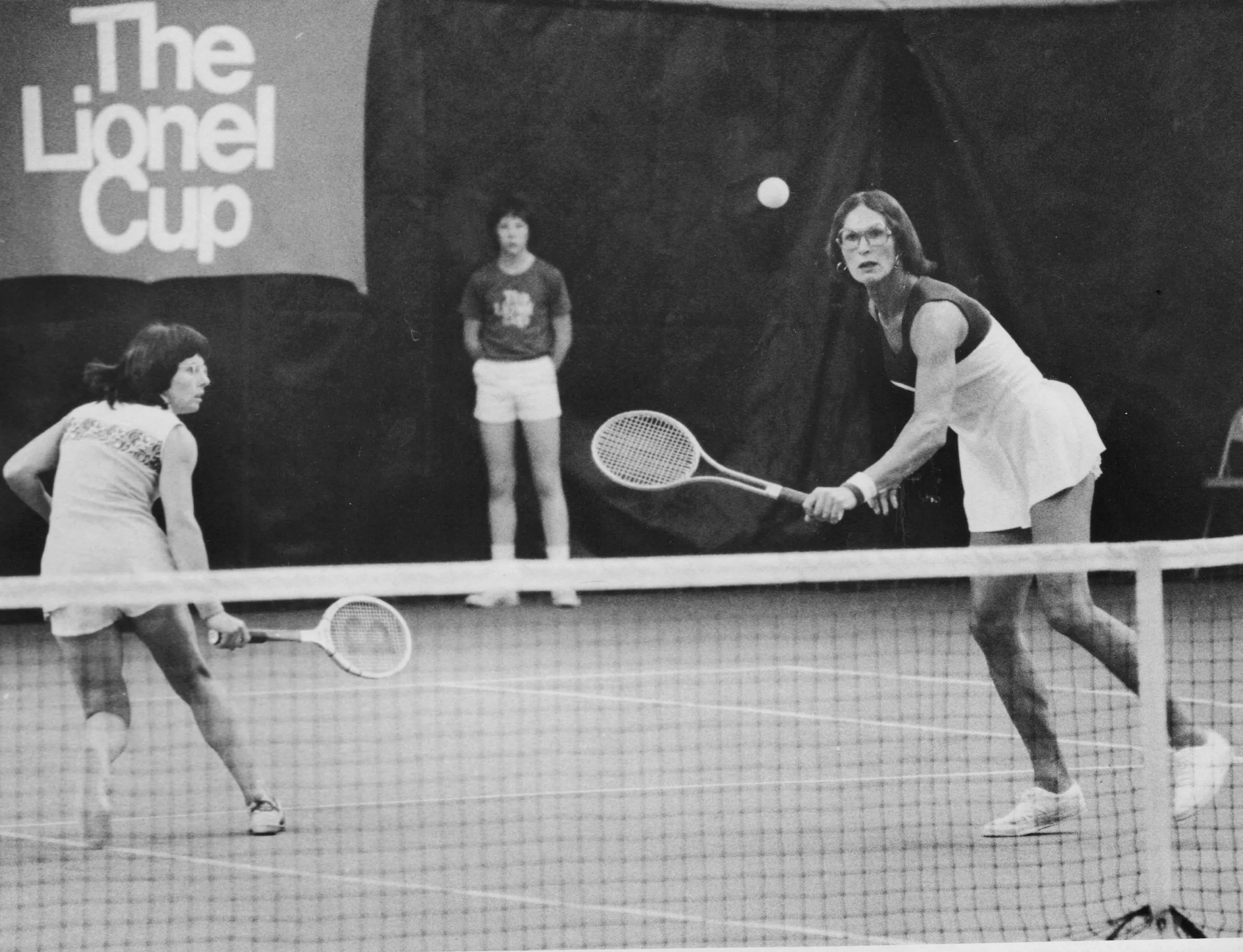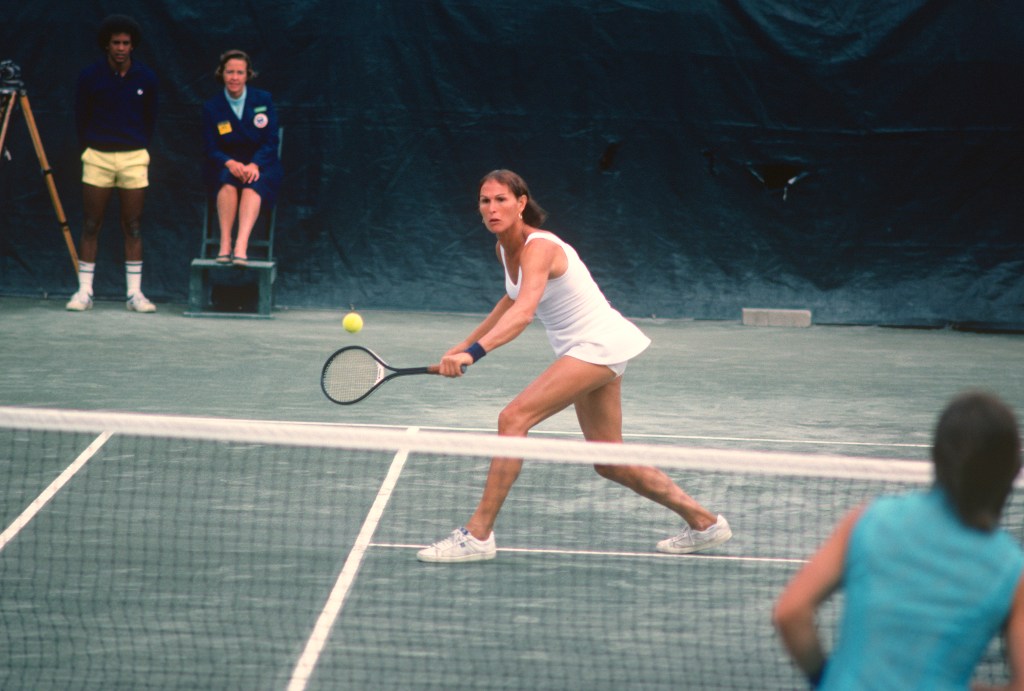 July 01 2025, 08:15
July 01 2025, 08:15 Former tennis player Renée Richards is known as a pioneer among trans athletes and coached Martina Navratilova to two Wimbledon titles.
Richards made waves on the professional tennis circuit in the 70s and was one of the first recognised professional trans athletes. She had success on the court with her left-hand serve and in 1977 won the 35-and-over women’s singles at the US Open, the same year she reached the doubles final with Betty Ann Grubb Stuart, losing to Navratilova and Betty Stöve.
Richards was also among the first class of inductees into the National Gay and Lesbian Sports Hall of Fame.
However, after retiring from tennis, Richards changed her perspective on trans athletes competing and regrets her decision to fight for a place in women’s tennis.

Renée Richards’ ground-breaking legal battle
Richards played in the US Open men’s singles in 1955 and 1957. But in 1975, aged 40, underwent gender-affirming surgery. She chose the name Renée, the French word for “reborn”.
She then returned to amateur tennis. However, after just one year, she was outed by TV anchor Dick Carlson – right-wing pundit Tucker Carlson’s father – after she won a women’s singles division title at La Jolla, in California.
The story made national headlines and prompted the US Tennis Association, the Women’s Tennis Association and the US Open Committee to introduce genetic screening for female players. Richards refused to take the test to play as a woman in the US Open in 1976, resulting in her being barred from the competition as well as from Wimbledon and the Italian Open.
Richards challenged the policy, taking the case to the New York Supreme Court, which ruled in her favour – a case now seen as a landmark moment in trans athletes’ access to sport – allowing her to compete at the US Open in 1977.
Tennis legend Billie Jean King, who had played doubles with Richards, was a vital voice in Richard’s campaign for equality.
King, who has 39 Grand Slam titles to her name, insisted that Richards, despite being close to 6ft 2in tall, did “not enjoy physical superiority or strength so as to have an advantage over women competitors in the sport of tennis”. A number of other women tennis players at the time were much the same height.

Renée’s views on trans athletes
Richards retired in 1981, at the age of 47, having been ranked as high as 20th in the world. She became the surgeon director of ophthalmology at the Manhattan Eye, Ear and Throat Hospital.
In 2012, she apparently voiced her regret at fighting for trans equality in sport, according to Slate.
“Maybe, in the last analysis, maybe not even I should have been allowed to play on the women’s tour,” she said. “Maybe I should have knuckled under and said: ‘That’s one thing I can’t have as my new-found right in being a woman’.
“I think transsexuals have every right to play but maybe not at the professional level because it’s not a level playing field. Having lived for the past 30 years, I know if I’d had surgery at the age of 22, and at 24 went on the tour, no genetic woman in the world would have been able to come close to me. So, I’ve reconsidered my opinion.
“There is one thing that a transsexual woman unfortunately cannot expect to be allowed to do, and that is to play professional sports in her chosen field. She can get married, live as woman, do all of those other things, and no one should ever be allowed to take them away from her. But this limitation, that’s just life. I know because I lived it.”
Her comments echo president Donald Trump’s executive order, Keeping Men Out of Women’s Sports. The directive essentially prohibits transgender women and girls competing in women’s sports.
In April 2024, Richards provided the Women’s Tennis Association with a position paper on the participation of transgender women in sports. It was published by Sport Illustrated last February.
“Male anatomy and physiology cannot be reformatted by estrogen therapy in transgender women because testosterone has driven permanent effects from early-life exposure,” she wrote. “I believe that having gone through male puberty disqualifies transgender women from the female category in sports.
“It is possible that with the use of puberty-blocking hormones, there may be a time when prospective transgender women and girls may not go through male puberty. Their inclusion in sports as women will have to be re-evaluated if, and when, that happens.”

Coaching Martina Navratilova
Richards coached lesbian superstar Navratilova from 1981 to 1983. During that time, the Czech-American player won Wimbledon in 1982 and 1983, the Australian Open in 1981 and 1983, the French Open in 1982 and the US Open in 1983.
Off court, Navratilova has aired her views about the trans community. She has campaigned against transgender inclusion in sport and supported the views of author JK Rowling.
20-time Wimbledon champion Navratilova has said there is “no such thing as a trans lesbian” and claimed: “I’ve been jettisoned by lots of groups in the LGBTQ+ community [for my views]. But I’ve been speaking my mind for a long time. I’m not going to change that. It’s been pretty rough but I know I’m on the right side of history.
“I’m right on most people’s opinion about women’s sex-based spaces, and especially sports. They need to stay female.”
Share your thoughts! Let us know in the comments below, and remember to keep the conversation respectful.
The post The trans tennis player who coached Martina Navratilova to two Wimbledon titles appeared first on PinkNews | Latest lesbian, gay, bi and trans news | LGBTQ+ news.